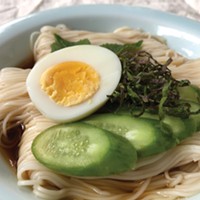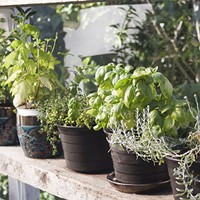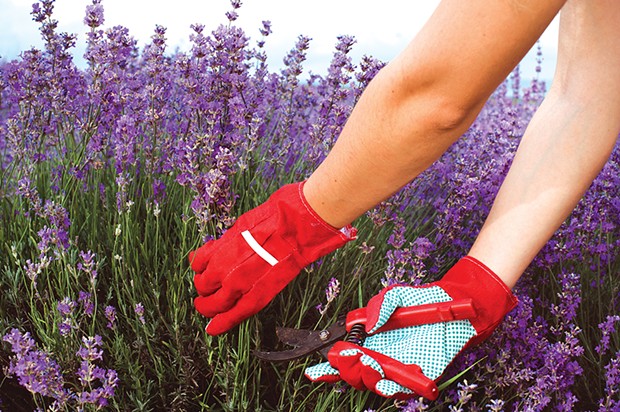[
{
"name": "Top Stories Video Pair",
"insertPoint": "7",
"component": "17087298",
"parentWrapperClass": "fdn-ads-inline-content-block",
"requiredCountToDisplay": "1"
}
]
Like the song goes, "Summertime, and the living is easy." Here on the home farm, we've been enjoying the pleasant mid-summer days and long evenings, as well as garden fresh salads and veggies. After staying committed to maintaining designated flower and medicinal herb patches for a few seasons, the sections are well established and we are clipping blossoms and herbs like crazy. All of these perennials are drought and deer tolerant, have medicinal properties and also taste delicious. They add color to the landscape and attract beneficial insects.
The power of flowers goes beyond simply enjoying them cut in the house. We also use blossoms for medicinal oil and salves. Additionally, we collect blossoms for teas and eating fresh in salads. Here's a quick list of edible and medicinal flowers that are easy to grow in our gentle North Coast maritime climate. Growing any one of these beauties will add flair and drama to the landscape, and enhance the medicine cabinet with quick remedies for common ailments. All of these can be planted now, just make sure to mulch and keep well watered while they're transitioning to their new home.
Calendula (Calendula officinalis, aka marigold). This bright yellow to orange blossom self-sows and will happily take over whatever corner of the yard it's given. The first flower to bloom in the spring and also the last blossom of the fall, this cheerful plant toughs it out almost anywhere. Fresh blossoms are sticky with anti-fungal resin and can be enjoyed in salads or stir-fries. Once dried, calendula blossoms can be made into a healing salve (See Salve recipe below) that is great for cuts, burns, sores and rashes.
German Chamomile (Matricaria chamomilla). This delightful plant grows easily from seeds sown in the early spring rains. Chamomile adds delicate charm to the landscape with its tiny white flowers and transparent texture. It also makes a great companion plant to others in the garden, keeping plants around it healthy and disease free. Chamomile blossoms are best harvested by raking through them with the fingertips. Fresh from the tea patch and dried, homegrown is much more flavorful and colorful than commercial teas, and a cup relaxes you for sweet dreams at the end of a full workday.
Lavender (Lavendula): This dreamy purple flower is a must. A decent lavender patch can be started with three plants. The most common medicinal varieties are L. officinalis and L. angustifolia. After a few years, root divisions and cuttings can be made to expand the bed. Lavender is touted as an aromatherapy treatment to ward off depression, fatigue and anxiety. Lavender is another great herb for skin problems and can be made into a salve (see recipe below). It also repels insects and stuffs sachets to keep moths away from precious fall wool sweaters.
Nasturtium (Tropaeolum majus): Nasturtium is easily grown from seed and self-sows once it's established. Both the greens and blossoms are edible as a delicious spicy-sweet addition to salads and omelets. High in vitamin C, it's great for colds and flu.
Rose (Rosa): The queen of the herb garden, roses make lovely homegrown potpourri and skin cream. There's nothing more luxurious than a basket of freshly collected rose petals. Added to the bath it's a gentle sedative and great for healthy skin.
For those of you ready to put your carefully grown flower blossoms to good use, why not try making a couple of different salves? They're easy to make and last for years. All it takes is a little time and careful preparation, and before you know it you have a medicinal product to use for months to come. Why buy a commercial ointment full of strange chemicals when instead you can use a beautiful organic remedy made right at home? Go ahead, unleash your inner healing spirit and get cooking. Follow the simple recipe below, adapted from Medicinal Herbs by Rosemary Gladstar.
Medicinal Oil
Ingredients:
Dried blossoms, such as calendula or lavender
Organic oil, such as olive, sunflower or apricot kernel
Place the dried blossoms in a double boiler with water in the bottom pan. Cover the blossoms with the oil and bring the water below to a low simmer.
Simmer gently for 30-60 minutes until the oil turns golden and smells strongly of herbs.
Over another pot or glass container, strain the herbs out of the oil using a metal strainer lined with cheesecloth. Once the oil is cool, make sure to squeeze all of the excess oil from the spent herbs. Let the oil cool and label the container.
Salve
Ingredients:
Medicinal herb oil (see above)
Beeswax
For each cup of finished herbal oil, add ¼ cup of beeswax. Heat the oil and beeswax together over the lowest heat, stirring occasionally, until the beeswax has melted.
Test the consistency by placing 1 tablespoon of the mixture on a plate and letting it sit in the freezer for 1-2 minutes. Check the firmness of the salve. For a harder salve, add more beeswax to the blend. For a softer salve, add more oil.
Once the mixture is the desired consistency, remove the blend from the heat and pour it immediately into small glass jars or tins. Label your containers and store the salve in a cool, dark place.
Katie Rose McGourty is the owner of Healthy Living Everyday at www.healthy-living-everyday.com.
Speaking of...
-

'Comida del Pueblo'
Feb 21, 2021 -

Shiso with Everything
Aug 6, 2020 -

Micro-farming a Kitchen Herb or Succulent Garden
Aug 29, 2019 - More »
more from the author
-
On Becoming A Flockster
What chickens bring to your garden
- Jul 30, 2020
-
Blackouts and Enchanted Gardens
- Nov 28, 2019
-
Getting Covered and Putting up Apples
And other tasks for October harvest
- Oct 11, 2019
- More »
































